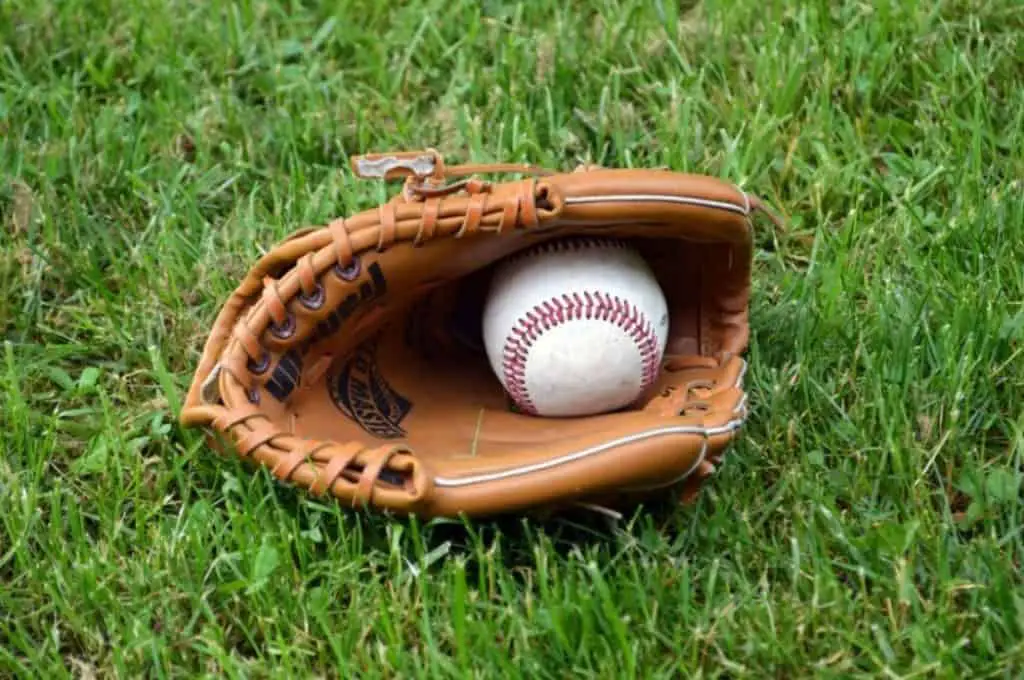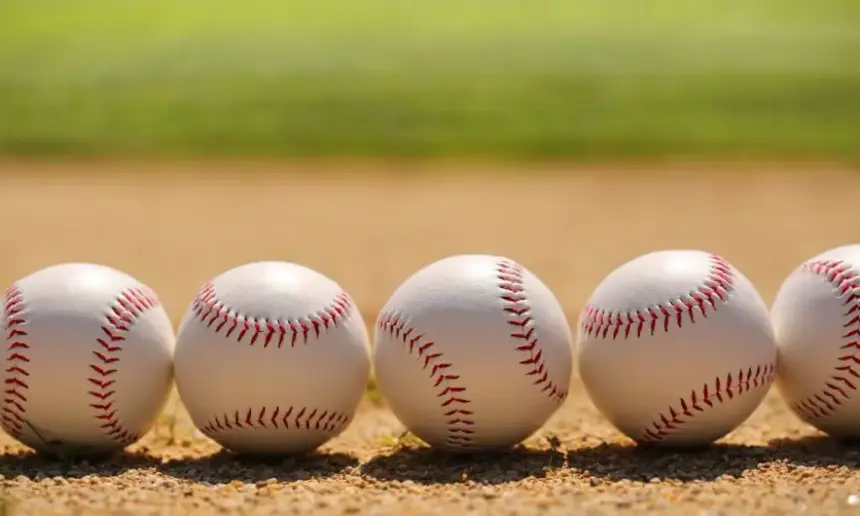How Much Does A Baseball Weigh? (In Ounce And Gram)
The rules and basics of baseball are mostly the same at every level of the game.
This allows even the young kids and Little Leaguers to make plays similar to those they see on TV when the pros play.
However, if you dig a little deeper, you’ll see some subtle differences between different competitions, even though the fundamentals are mostly the same.
One of those differences is in the equipment being used, particularly the balls.
While they may look the same at a glance, not all baseballs are the same.
They vary both in size and weight. The weight variations allow kids, who are not nearly as strong as the pros, to successfully pitch, hit, and throw the ball.
So, the weight of a baseball significantly contributes to the way the game is played.
Below, I’ll look into how much does a baseball weigh and why is baseball weight important.
Table of Contents
How Much Does An MLB Baseball Weigh?
No products found.
The fairness of the game is guaranteed, among other things, by the fact that all MLB games are played with the ball of the same weight and size.
MLB is rather strict when it comes to monitoring the manufacturing process of baseball and does everything to ensure the uniformity of all balls used during games.
Still, as the process will inevitably vary due to differences in raw materials and various external factors, the league allows some leeway here, a quarter of an ounce to be precise.
So, the official MLB baseball weighs between 5 and 5¼ ounces (142 and 149 grams).
How Much Does A Little League Baseball Weigh?
No products found.
In most Little League competitions, the weight of the baseball is the same as in MLB, between 5 and 5¼ ounces (142 and 149 grams).
However, for leagues with younger players, and particularly in Tee-Ball competitions, the weight is reduced and it may be between 4 and 5 ounces (114 and 142 grams).
While they’re commonly the same weight as for adults, baseballs in the Little League are usually not wound as tight which makes them softer and reduces injury risk.
History Of Baseball And Its Weight

Throughout baseball history, baseballs and the way they were made changed quite a lot.
These changes also impacted how much does a baseball weigh which influenced the game itself, giving the advantage to pitchers or hitters.
The evolution of baseball went through a couple of major stages.
Early Days
In the early days of baseball, players used balls that varied greatly in weight, size, shape, and the way they were made.
Often, the players would make the balls themselves. It wasn’t until the 1850s that the first efforts were made to standardize baseballs.
Teams from the New York area agreed to regulate the weight of baseballs at 5 1/2 – 6 ounces and circumference at 8-11 inches.
However, as they were still handmade, baseballs continue to be of different sizes and weights.
The Dead-Ball Era
The first true standardization came with the foundation of the National League in 1776. A.G Spalding managed to convince the league to use his design as the official balls of the NL.
His design, featuring a rubber core was in use for more than a century.
His baseballs were famous for favoring pitchers and started what is known as the Dead-Ball Era, known for very few runs per game.
In 1910, the cork core was first introduced.
New balls lighter and faster sparked the offense, but the pitchers quickly adjusted by starting to scuff the baseballs.
The Live-Ball Era
Another significant change happened in 1920 with the introduction of Australian wool used for windings.
The new material made the ball larger and heavier, but also more tightly wound, making it more difficult for the pitcher to control.
This switched the advantage to the hitter, resulting in a major uptick in runs and home runs.
Another major milestone in this era happened in 1934 when the NL and the AL agreed for the first time to standardize the ball to be used in both leagues.
The standard regulated the weight of the balls at 5 to 5 1/8 ounces.
World War II
During WWII, the production of baseball was heavily influenced by the scarcity of rubber materials.
The manufacturers adjusted by making the granulated cork core, wrapped in two hard shells made of balata, a rubber-like material made from tropical trees.
The use of balata lasted only for a couple of years until the mass production of synthetic rubber started.
WWII – Present
Not much has changed since the end of WWII up until the present day as far as the baseballs are concerned.
Game balls are still made of cork, rubber, yarn, and hide. The only significant change was the introduction of cowhide instead of horsehide covers in 1974.
As for weight standards, in 1958, the league increased the allowed weight by an eighth of an ounce. The new rule allowed balls to weigh between 5 and 5¼ ounces.
What Are Baseballs Made Of?

The technology of making baseballs and the materials used for their production have changed over the years.
Even today, the materials baseballs are made of may vary, depending on the type of the ball and the intended purpose.
Below, I’ll take a closer look at each of the baseball basic parts and explain what they’re made of.
Core (Pill)
The core or the pill is the center of the baseball and can be made of different materials, depending on the type of ball.
Still, the most commonly used materials are cork, rubber, and some combination of the two.
Based on the material and manufacturing process, there are two different types of cores: cork and rubber and cushioned cork.
Cork and rubber pill is black, and made of, as its name says, a mixture of cork and rubber. Cushioned cork core is recognizable by the orange or red color of the top layer.
In the center is the small ball-shaped piece of cork,
The cork is encased in two shells made of black rubber and sealed with a gasket made of red or orange rubber.
Balls used on higher levels of baseball, such as MLB or MiLB usually feature cushioned cork core.
Windings
The pill is surrounded by thick layers of wool yarn, better known as windings. There are four layers of windings around the cork, each with a different thickness.
The three inner windings are commonly made of wool mainly due to its flexibility and resiliency.
The fourth and finishing layer is made of a poly-cotton blend for extra strength and better resistance to tearing.
Baseballs of lesser quality will often use a lower grade of wool or completely replace windings with composite material.
Covering
There are two types of baseball covers. The first uses genuine leather for the exterior material, while the second one is made of synthetic leather.
Balls used in regulation games will almost always use genuine leather cover, usually cowhide.
The balls with synthetic leather coverings are mostly used for practice purposes. This is because genuine leather is much more durable and provides a better grip.
However, it’s also more expensive. Also, genuine leather may vary in thickness, which is one of the reasons baseballs may slightly differ in weight.
Synthetic leather covers commonly feature different vinyl and vinyl-like materials.
These balls won’t last that long, but their advantage over the genuine leather ones is that they don’t absorb water that quickly.
Stitching
The final stage of the baseball manufacturing process is stitching the two covering parts together.
This is done with the waxed red thread and there is a total of 108 stitches holding the cover together.
Stitching, or seams, can be flat, raised, or rolled. Younger players usually use balls with raised seams as they allow better and easier control.
Pros use rolled seam which provides less air friction and allows the ball to fly faster. The flat seams are commonly used for batting practices.
The Different Types Of Baseball
While baseballs used in MLB are uniform and standardized, there are several other ball types used for different purposes.
- Safety Baseballs – designed for use by kids aged 4-8, these balls prioritize safety. For this reason, they’re significantly softer and lighter than other ball types.
- Reduced Injury Factor Baseballs – these balls still prioritize safety, but offer performance more similar to regulation balls. They have a polyurethane core and are ranked by the Severity Index, depending on the age group they’re intended for.
- Youth Tournament Baseball – used in the Little league, these balls are intended for kids aged 8-14. They have similar features to balls for adults but are wound less tightly.
- High-School and College Baseballs – rather similar to pro baseballs, these balls are only slightly lighter and less dense. They’re designed for use with aluminum bats.
- Professional Baseballs – used by the pros, these baseballs satisfy the strict standards required by the MLB. They feature a high-grade cowhide leather covering and flat seams.
- Practice Baseballs – as their name says, these balls are used for practice. They’re made from much cheaper synthetic materials.
- Weighted Baseballs – much heavier than the standard weight, these balls are used for pitching practices as an instrument for improving arm strength. Their weight can vary from 6 to 12 ounces.
Conclusion
It may not seem very significant, but how much does a baseball weigh has a major impact on the game.
The difference in the way the game was played in different eras throughout history has much to do with how heavy the baseballs were.
A heavier or lighter ball may mean that the advantage lies with the pitcher or the hitter, thus influencing the scoring and the balance between the offense and defense.
So, it’s no wonder that MLB is very strict when it comes to rules on ball weight, as it’s one of the ways to ensure fair competition for everyone involved.




